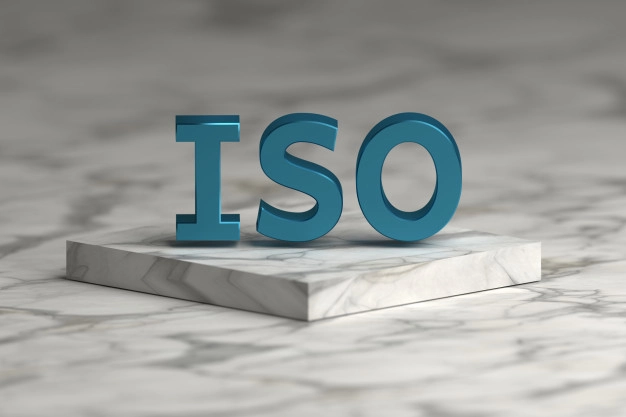Running a business today is tough. You do a lot, juggle tasks, and chase lists. But what if you could save time and grow your business? That’s where outsourcing partnerships come in.
Forget old-school outsourcing. Partnerships are different. They’re like your team, helping you reach your goals. They bring skills so you can focus on leading. You’re the boss. They’re your right hand, handling tasks so you can grow.
We’ll talk about benefits and finding the right fit. We’ll discuss building a strong partnership as well. Do you want to lighten your load and boost your business? Let’s go!
Understanding Outsourcing Vs. Partnering
Managing your business can be a lot of work. Many tasks need your attention. Outsourcing is like a lifeline. It lets you focus on your strengths by giving tasks to others. But you must know the difference between outsourcing and having a partner.
- Traditional outsourcing is like hiring a temporary worker. They do their job with little care for your success. It’s just a transaction.
- An outsourcing partnership is different. It is like having a teammate who wants both of you to succeed. You work together, talk a lot, and share the same goals.
Conversations are clear. You have people to talk to and ways to talk. Your goals match. This makes sure what you do helps the company. And suppose things change; your partner can change.
This way, they fit your needs. Both sides take responsibility for doing good work. With an outsourcing partner, you build long-term relationships. It helps your business grow and succeed. It’s a significant advantage for your business’s future.
Why Consider an Outsourcing Partnership?
Do you want to save time for the things that matter? A strategic partnership might be your answer. It’s like gaining a reliable teammate. They handle tasks to let you drive your business forward.
Let’s dive into how an outsourcing partner can be your secret weapon for success.
1. Optimizing Costs
Running a business involves substantial expenses. These include payroll, software, and office space. But, a strategic outsourcing partnership can reduce these costs without compromising quality. Outsource tasks such as IT support or software development. This helps your team focus on core activities while you save on working expenses.
For instance, consider a mid-sized tech startup. Managing an in-house development team involves hefty costs:
- Salaries for 5 developers: $400,000 per year
- Recruitment and training: $10,000 at the beginning
- Equipment and software licenses: $10,000
- Office space and working costs: $50,000 per year
- Total for the first year: $470,000
But outsourcing the development to a firm in Asia can be much more cost-effective:
- Outsourcing rate: $35/hour
- For a project requiring five full-time developers. Let’s say it’s for six months: $35/hour * 40 hours/week * 4 weeks/month * 12 months * 5 developers = $168,000
- No recruitment, training, or equipment costs
- Working and overhead costs will be in the hourly rate
- Total for the project: $336,000
This example highlights significant savings:
- In-house development costs: $470,000 for the first year
- Outsourced development costs: $336,000 for the project
- Total savings: $134,000
- Percentage saved: 28%
This way, businesses can save between 10% and 40% of their expenses. They can use these savings to fuel further growth and innovation.
2. Access to Specialized Expertise
Creating an in-house dream team demands significant time, money, and a stroke of luck. You might be a marketing whiz but lack a top-tier coder. You may have stellar legal experts, but you need a data wizard.
Professional outsourcing partners grant access to a global pool of talent. You can tap into the expertise of social media mavens. You can access experienced programmers whenever necessary. With outsourcing, you hire the specific skills required for each task.
Let’s use fintech software development as an example. Partnering with a team that possesses extensive expertise is crucial. They can help mitigate risks and ensure sustainable growth. This provides the specialized knowledge that drives success in this competitive field.
3. Be More Efficient and Productive
Picture being overwhelmed. Emails stack up, and deadlines loom. This is where an outstanding outsourcing partner steps in. They handle routine tasks, freeing your team to focus on what they do best. You may be great at marketing but stuck on software development.
Outsource your support and watch your team excel in strategic areas. Your outsourced partner takes on the mundane. They let your team shine on essential projects. Everyone wins—you do more, and your team feels energized. Your business thrives as well.
4. Be More Innovative and Agile
Staying innovative is crucial in today’s fast-paced world. Yet, routine tasks may hinder your team’s creativity. A reliable partner introduces fresh perspectives and innovative approaches. Their experience with diverse clients allows them to spot new trends your team might overlook. Since they do not handle your daily tasks, they offer unique viewpoints.
For instance, consider healthcare software development. In this area, constant innovation is essential to enhance the user experience. Using AI technology for facial analysis can improve medical diagnostics.
An outsourcing partner can collaborate on research and provide the necessary expertise. This way, they offer unexpected solutions to complex problems. This fresh input can lead to breakthroughs, keeping you agile and updated in the market.
5. Scale Your Business
Imagine your business booming. Sales are up, and customers keep coming. But you need more staff quickly. The partners help you scale fast. Do you need extra developers or more IT staff?
Your IT outsourcing partner finds the right people right away. This flexibility lets you grab opportunities and adapt without delay. It’s like having a stretchy band in your business model. You expand when you need to and contract when things slow. This is how you stay competitive.
6. Global Expansion Opportunities
Do you dream of reaching worldwide customers? Breaking into global markets can feel daunting. But with the right outsourcing partner, you can make it happen. They have the setup and know the culture. They speak the language of your target markets as well.
This lets them manage the local details. It means that you focus on your product and brand. Suddenly, markets in Asia or South America are within reach. You can grow your sales in the world without the huge initial costs. Partnering right is your ticket to worldwide success.
How to Find the Right Outsourcing Partner?
Discovering the right partner can feel like searching for a unicorn. You need a company that meshes well with yours. They should understand your goals and deliver well.
With countless options, how do you zoom in and choose the best? Don’t worry; we have your back. This is a step-by-step guide on how to find an outsourcing partner.
1. Define Your Outsourcing Goals and Needs
It’s essential to have a clear understanding of your goals and needs. This is necessary before you start looking for a partner. Identify what specific tasks or projects you want to outsource and the desired outcomes.
Determine the metrics you will use to measure success:
- Are you looking to reduce costs and improve efficiency?
- Do you want to access specialized skills or scale your operations?
Defining your objectives helps you communicate your expectations to potential partners. This way, you can review their ability to meet your needs.
2. Conduct Thorough Market Research
Conducting comprehensive market research is essential to finding the right partner. Use various resources to gather information about potential partners. There are numerous platforms where you can find reviews and ratings of outsourcing firms. They include Clutch, Designrush, Software Outsourcing Journal, and GoodFirms.
These platforms provide insights into the experiences of past clients. This can help you shortlist potential partners. Look for reviews that highlight the firm’s expertise. They should be reliable and deliver on time and within budget.
Examine their case studies and client reviews. This way, you can understand their competence. You’ll know how they have handled similar challenges in the past.
3. Evaluate Partner Capacity
Assessing the capacity of potential partners is critical. You need to ensure that the outsourcing firm has the necessary resources. They should have a skilled workforce. The company must have the technology and infrastructure to handle your project.
Ask about the size of their team and the expertise of their staff. Choose a partner that can scale their resources up or down. This is important based on your project’s requirements.
Value Expertise as an Important Criterion:
When assessing outsourcing partners, technical expertise should be a top priority. Look for partners who demonstrate:
- Case studies: Find out about their experience with similar projects.
- Technical Expertise: Ensure they have a deep knowledge of technologies. They should understand the platforms relevant to your project. This includes knowledge of programming languages, frameworks, and tools required for the project.
- Skill Sets: Assess the skill sets of their team members. Do they have the necessary know-how and experience to deliver high-quality work?
- Access to the Latest Technology: Your partner should use the latest technology. They must be up-to-date with industry trends. This ensures that your project benefits from the most current and effective solutions.
- Complex Problem-Solving Skills: Look for a partner with problem-solving skills. They should have a proven track record of tackling complex issues. Their ability to navigate and resolve challenges is a good indicator. It shows how competent and reliable they are.
- Passion for Your Project: Choose a partner with genuine interest and enthusiasm for your project. Their passion can drive innovation and commitment, leading to better outcomes.
4. Consider Cultural Fit and Communication
Cultural fit is an overlooked but crucial aspect of picking an outsourcing partner. Differences in language, discussion styles, and time zones can create significant challenges. These are three key areas to focus on:
- Language: Ensure that the outsourcing team has proficient language skills. This helps you to communicate well with your in-house team. Poor discussions can lead to confusion and errors.
- Contact Channels: Establish clear contact channels and protocols. Regular meetings, progress updates, and transparent reporting are essential. They are ingredients for a successful partnership.
- Schedule & Different Time Zones: Consider the time zone differences. Think about how they will impact your project. Some overlap in working hours can be beneficial. Yet, it’s essential to have strategies to manage time zone differences.
5. Engagement Models & Agile Methods:
Choosing the right engagement model is crucial for the success of your outsourcing project. It can be a fixed-price model, staff augmentation, dedicated development team, hybrid, or offshore software development. Each model has its advantages and drawbacks.
Discuss these options with potential partners. Then, decide which one aligns best with your project needs and budget. In addition, adopting agile methods can make your project more efficient and flexible.
Agile allows for iterative development. This process means breaking down projects into smaller, manageable parts. This approach ensures continuous improvement and timely delivery of project milestones. Ensure your outsourcing partner is well-versed in Agile practices. They should be able to implement them well.
6. Make Sure Your Data and Intellectual Property Will Be Safe:
Data security and intellectual property protection are paramount. Ensure that the outsourcing partner has robust security measures in place. These will protect your sensitive information.
This includes compliance with relevant regulations and standards and secure data storage. They should have stringent access controls as well. Discuss their policies and procedures for data protection. Ensure they align with your requirements.
7. Request a Proposal and Review the Outsourcing Contract:
Request detailed proposals from your shortlisted outsourcing partners. The proposal should outline the scope of work, timelines, and output. It should spell out pricing and terms and conditions. Scrutinize the proposals. Compare them based on completeness, clarity, and alignment with your project goals.
The outsourcing contract is a critical document. It formalizes the relationship between you and your outsourcing partner. It should detail the roles of each party and project milestones. The document should outline payment terms and dispute resolution mechanisms.
Ensure that the contract includes provisions for discretion and intellectual property rights. It should handle termination clauses as well. Review the contract and seek legal advice if necessary to protect your interests.
Good Practices for a Successful Outsourcing Partnership
Finding the right outsourcing partner is just step one. Next, turn that partnership into a smooth operation. Follow these critical practices to build a dynamic duo to boost your business:
Effective Contact Channels
Establishing robust and effective contact channels is key. Strong contact fosters a solid relationship. Both parties stay aligned on goals and progress.
Key Elements of Effective Contact Channels:
- Multiple Platforms: Use various tools like email and video conferencing. Project management software and instant messaging keep contact seamless.
- Regular Updates: Schedule meetings and updates to keep everyone aligned. This includes weekly check-ins, monthly reviews, and quarterly meetings.
- Cultural Awareness: Mind cultural differences and time zones. Respect these differences to prevent issues and foster teamwork.
- Feedback Mechanisms: Create structured feedback loops to address concerns on time. Encourage open and honest feedback to build trust.
Transparent Expectations
Setting clear expectations from the outset is crucial. Misaligned expectations lead to conflicts and project delays. Both parties must agree on the scope, objectives, and outcomes of the outsourcing partnership.
Steps to Establish Transparent Expectations:
- Detailed Contracts: Draft contracts that outline the scope of work. Include timelines, output, quality standards, and payment terms. Use this document as a reference throughout the project.
- Goal Alignment: Ensure the partner understands your business objectives. Explain how outsourced tasks contribute to these goals. Aligning goals helps with task decisions.
- Performance Metrics: Define clear performance metrics and KPIs to measure success. Review these metrics to assess progress. Make necessary adjustments based on the reviews.
- Onboarding Process: Invest time in a thorough onboarding process for the outsourcing team. Teach them your company’s processes, culture, and expectations. This initial investment reduces errors.
Performance Management
Monitoring and managing performance is vital for outsourcing success. Without effective management, ensuring expected results from partners is difficult.
Components of Effective Performance Management:
- Regular Assessments: Conduct frequent assessments. This helps you evaluate work quality and deadlines. Use assessments to give feedback and recognize achievements.
- Benchmarking: Compare the partner’s performance to industry standards. Benchmarking identifies improvement areas and fosters an improvement culture.
- Incentives and Penalties: Establish incentives for great performance and penalties for poor results. This motivates the partner to maintain high standards.
- Issue Resolution: Develop a process for resolving issues and conflicts. Address problems to prevent them from escalating and affecting projects.
Being Adaptable and Flexible
The business environment changes all the time. Outsourcing projects must adapt. Being flexible helps manage changes and challenges well.
Strategies to Be Adaptable and Flexible:
- Change Management: Use a change management process. Handle changes in scope, timelines, or requirements. Document and approve all changes by stakeholders.
- Agile Methods: Adopt agile methods for development. Agile practices allow teams to respond to changes. Teams can deliver incremental value well.
- Resource Scaling: Ensure the outsourcing partner adjusts resources as needed. Manage workload fluctuations and meet project demands.
- Innovative Culture: Create a culture that encourages innovation. Encourage the team to share ideas and solutions. Enhance project outcomes through shared input.
Risk Mitigation Strategies
Outsourcing involves inherent risks. They include data security and continuous project growth. Implement robust risk strategies to safeguard your business interests.
Key Risk Mitigation Strategies:
- Due Diligence: Conduct thorough due diligence before choosing an outsourcing partner. Assess their financial stability, track record, technical abilities, and references.
- Data Security: Implement strict data security measures. This way, you protect sensitive information. Use encryption, secure access controls, and regular audits to ensure data integrity.
- Legal Protections: Include legal protections in the contract, such as NDAs. Ensure intellectual property rights clauses and termination clauses are present. These provisions protect your business from legal disputes.
- Business Growth Planning: Develop a business growth plan to address potential disruptions. Include backup resources and disaster recovery procedures. Have contingency plans for critical tasks.
- Regular Audits: Conduct regular audits to assess compliance with contract terms. Ensure adherence to security standards and performance metrics. Audits identify potential risks early and prompt corrective actions.
Final Thoughts
Running a business is hectic. You juggle many roles and chase opportunities. But what if you could focus on your strengths? That’s where outsourcing shines. Choosing the right outsourcing partner gives you access to expert help.
Picture having a team focused on the tasks you outsource. They bring fresh ideas and skills, freeing you to grow your business. You’re not just delegating tasks. You’re forming a strategic bond.
A suitable partner becomes an extension of your team, driving growth together. Are you ready to tap into outsourcing’s power? Act now. Use what you’ve learned to find the perfect partner.










